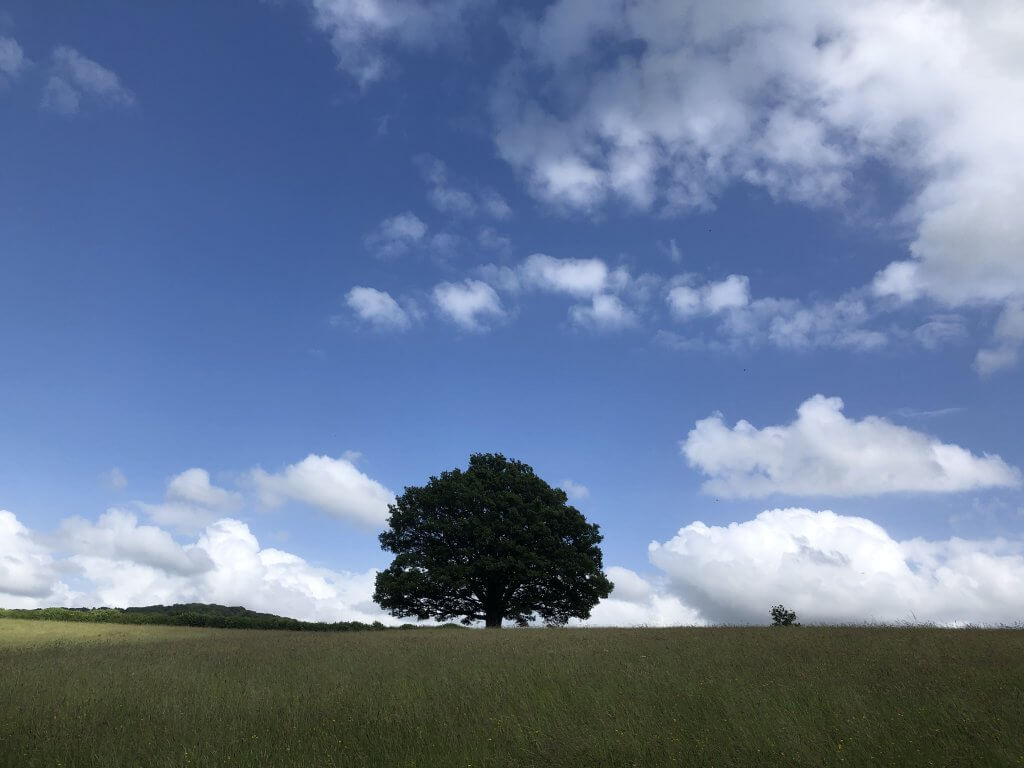Trees in Fields
September 2021

Agroforestry is an unfamiliar word to most. Agro – as in “stop giving me agro” doesn’t help. Think agriculture and forestry. Food growing and trees. Or trees in fields. So agroforestry can simply mean orchards. It can even mean hedgerows – small trees on the edges of fields. But, without getting tied down in the nomenclature, let us focus on why we think it is such an important concept.
- 3D farming: why just rely on the 2D of your garden or field when you can grow in all three dimensions
- Slow the blow: trees can slow wind. That means reducing the extremes of frost and low temperatures which can help plants and animals alike
- Mineral mining: trees have deep roots that can access minerals and water deeper than most plants. Those minerals ultimately end up in the top soil when the trees shed their leaves in the autumn, making them available to shorter-rooted plants
- Casting shade: who doesn’t appreciate the shade of a big old oak in the height of summer?
- Timber: it’s a long game but ultimately they can be the source of significant building materials
- Food: nuts, fruits, flowers
- Diversity: having more than one crop in a given area adds biodiversity but also adds a level of financial resilience in the event that one crop fails.
There are also of course challenges with planting trees in or around fields. Here are some of them that have impacted our context:
- Delayed gratification: some trees can take a loooong time before you benefit from planting them. Planting oak for a timber crop is a multi-generational business from day 1. Even fruit trees on vigorous rootstock are going to be 5 years before you get a viable harvest.
- Permission: despite all the hype of everyone wanting to plant millions of trees everywhere, depending on where you are and how many trees you want to plant, you will still need permission. If you are a tenant rather than owner of the land, you need permission from the land owner which may not be forthcoming if you are a farmer on a standard 5-year farm business tenancy.
- Cost: it takes people, ground preparation, tree costs, fencing or guards, mulching and time to ensure you successfully establish trees.
- Complexity: having more crops means possibly having more specialist equipment, different routes to market, harvest timings and end customers.

